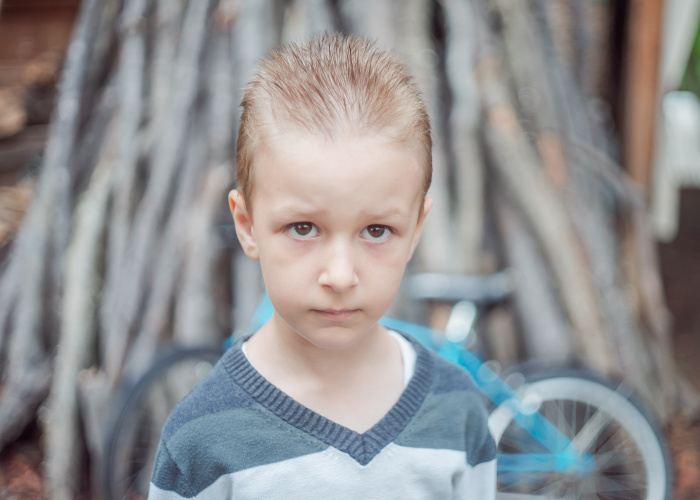It's crucial to know that students with autism and ADHD need special study strategies. Autism…

The Reason Why Some Autistic Children Don’t Speak
Advancements in understanding Autism Spectrum Disorder (ASD) have shed light on why some children face significant communication challenges in autism. For families of nonverbal autistic children, the journey of language development can be complex and varied.
An estimated 25% to 30% of those with ASD experience limited speech capabilities, positioning them within the nonspeaking or nonverbal autism category. Despite this, many such individuals retain the cognitive ability to understand spoken language and can communicate through other expressive mediums such as writing.
Determining the contributing factors to speech delays remains a critical aspect of supporting language development in autistic children. Conditions such as apraxia of speech can obstruct the clear articulation of words, creating barriers to verbal communication. As the autism community grows in understanding these challenges, therapy and intervention strategies continue to evolve, offering hope for improved communicative interactions.

Understanding Nonverbal Autism
Nonverbal autism encompasses a broad spectrum of symptoms within the autism community, where individuals face varying degrees of speech and communication challenges. While some individuals may have subtle difficulties in social communication, there are others who may exhibit more severe deficits, including a profound speech delay in autism or a complete lack of language skills. Such range in capabilities necessitates a comprehensive and customized approach to support and therapeutic intervention.
Interestingly, the reasons for speech absence in autism are not always a reflection of cognitive inability. For instance, a person with autism may understand spoken language and yet be unable to articulate their thoughts verbally. Therefore, it’s essential to explore and embrace the multitude of channels through which individuals can express themselves.
- Gestures
- Facial expressions
- Written communication
Each mode of nonverbal communication in autism plays a vital role in interacting with and understanding the world. While these methods may differ from traditional speech, they are no less significant and can profoundly affect a person’s quality of life by enabling the articulation of thoughts, emotions, and needs.
Given the complex nature of nonverbal autism, it is clear that the path to enhancing communication is rich with potential. With a concerted focus on individualized strategies that leverage both verbal and nonverbal cues, we can improve the way we support those living with autism in expressing themselves and connecting with others.

Key Factors Contributing to Speech Absence in Autism
Delving into the intricacies of autism spectrum disorder reveals numerous potential reasons why speech delay in children with autism occurs. For many parents and caregivers, understanding these factors offers insight into the condition and informs the development of targeted interventions for nonverbal autistic children aimed at overcoming these communication challenges in autism.
Neurodevelopmental Variations in Language Development
Each child is unique, and this is especially true in the context of autism. Certain neurodevelopmental variations directly affect language development, creating roadblocks in the path to speech. Complexities in auditory processing can make the interpretation of spoken language an insurmountable challenge for some. For others, the cognitive understanding of language is present, yet the ability to vocalize remains locked behind unwieldy neurological barriers. The existence of such variations underscores the urgent need for unique strategies to promote speech in autism, adapted to individual needs and situations.
Impact of Social Interaction and Behavioral Challenges
The journey to speech is often influenced by social and behavioral factors. Many individuals with autism display a marked preference for consistency and routine, becoming visibly distressed with change. Others may develop intensely focused interests that monopolize their attention. Social cues like eye contact and name response can be elusive, adding layers of difficulty to the development of communication. In light of these challenges, tailored interventions for nonverbal autistic children become indispensable tools in fostering developmental progress.
Speech Apraxia and Motor Difficulties
For some children with ASD, speech obstacles are compounded by speech apraxia—a motor disorder that disrupts the planning and coordination required for verbal expression. Despite the potential for strong cognitive skills and an understanding of language, the physical act of speaking becomes an overwhelming hurdle. This separation between cognitive intent and physical execution necessitates a concerted focus on intervention for nonverbal autistic children specifically designed to address motor difficulties and to nurture alternative forms of nonverbal communication in autism.
Regardless of reasons for speech absence in autism, these factors highlight the intricacies within the autism spectrum. What remains paramount is an empathic, individualized, and patient approach to help each child reach their potential in communication, embracing the tools and tactics that resonate most effectively with their unique abilities and challenges.

The Diagnosis and Assessment of Nonspeaking Autistic Children
The pathway to diagnosing nonspeaking autistic children is a structured, multiphase effort that starts with an initial screening from a pediatrician. This screening often involves observing if the child has missed language milestones or exhibits potential communication challenges in autism. Recognizing these signs early can set the stage for timely intervention for nonverbal autistic children.
Following initial concerns, a series of assessments encompassing both verbal and nonverbal aspects of communication are conducted. These may cover:
- Physical examinations to rule out other causes of delay
- Blood tests to check for underlying health issues
- Imaging studies like MRIs or CT scans that provide insight into brain structure
More specialized evaluations are often pursued under the guidance of developmental-behavioral pediatricians who can administer autism-specific tests. Tools such as the Autism Diagnostic Observation Schedule (ADOS) provide a deeper understanding of a child’s social interaction, communication, and behavior. Interventions then focus on utilizing robust strategies to promote speech in autism and enhance overall communicative abilities.
Part of the assessment process includes identifying:
- Early signs of autism such as a lack of response to one’s name or avoidance of eye contact
- Repetitive behaviors or a fixation on specific topics
- Challenges in social interactions or adapting to changes in routine
The nuances of these behaviors provide critical insights, laying the groundwork for interventions such as:
- Educational programs designed to enhance language development
- Therapies to address related anxiety or attention challenges
- Family counseling to support the well-being of caregivers and siblings
These supportive strategies are crucial for building a foundation from which a child can explore and develop new ways of communication. Engaging with a breadth of therapies tailored to the child’s needs opens doors to equip them with the tools for expression and interaction.
Ultimately, this detailed approach not only aims to diagnose nonspeaking autism but also facilitates a proactive pathway toward treatment. It is through these intricate processes of diagnosis and assessment that effective intervention plans are constructed, offering every child the opportunity to reach their full communicative potential.
Conclusion
Autism Spectrum Disorder (ASD) presents an array of unique challenges that vary widely among individuals, especially in the realms of language development and communication. Recognizing the individual complexities surrounding autism and speech delay is imperative in crafting tailored interventions and support systems. For those who navigate life as nonverbal autistic children, alternative means of communication bear significant importance. While the absence of speech is evident, these children often possess the potential to understand and communicate in other profound ways, highlighting the need to embrace and strengthen nonverbal communication in autism.
Delving into the reasons for speech absence in autism not only enhances our current understanding but also paves the way for innovative and effective strategies to promote speech in autism. Whether it’s through dedicated speech therapy, the use of assistive technology, or reinforcing supportive educational frameworks, each intervention for nonverbal autistic children is a step towards unlocking their communication possibilities. Family support, alongside these targeted approaches, fosters an environment where language can blossom in myriad forms.
As we forge ahead, the commitment to advancing language development in autistic children becomes ever more critical. Through relentless research and community engagement, the hope is to unravel additional layers of communication challenges in autism, thereby improving the lives and outcomes of those affected. It is only through understanding, patience, and persistent support that we can ensure every child on the spectrum has the opportunity to express themselves and engage with the world around them.
FAQs
Why do some autistic children not speak?
Some autistic children may not speak due to a variety of factors including neurodevelopmental variations that impact language development, difficulties with motor skills necessary for speech, such as apraxia, and challenges with social interaction and behavior. Each autistic individual’s condition is unique, which can influence the development of speech in different ways.
What is nonverbal autism?
Nonverbal autism refers to individuals on the autism spectrum who do not use spoken words to communicate. Despite the lack of verbal speech, these individuals may understand language and can sometimes communicate using nonverbal methods such as gestures, facial expressions, or the use of picture symbols or assistive technology.
What are the communication challenges in autism?
Communication challenges in autism can range from difficulty in understanding and using language, problems with nonverbal communication like making eye contact or using gestures, to struggles with the social use of language, such as having conversations or understanding jokes and sarcasm. These challenges vary widely from person to person with autism.
How does autism affect language development in children?
Autism can affect language development in numerous ways. Some children may develop language skills at a slower pace, not speak at all, or lose previously gained speech abilities. Autistic children might also learn language in a nontraditional order and might have trouble understanding the social aspects of language.
What are neurodevelopmental variations in language development?
Neurodevelopmental variations in language development within the context of autism may include differences in how an autistic child’s brain processes language and produces speech. This can range from difficulties with understanding linguistic cues to challenges with the coordination of the muscles used in speech.
How do social interaction and behavioral challenges affect speech in autism?
Social interaction and behavioral challenges can affect speech in autism by making it difficult for autistic individuals to engage in the social aspect of language learning. This might include difficulty with reading social cues, a preference for nonverbal communication, or being less responsive to verbal interaction from others.
What is speech apraxia and how does it relate to autism?
Speech apraxia, also known as apraxia of speech, is a motor speech disorder that makes it difficult to speak. It involves problems planning and coordinating the movements needed for speech. While not exclusive to autism, it is a condition that can co-occur, contributing to the speech delay seen in some autistic children.
What strategies can promote speech in autistic children?
Strategies to promote speech in autistic children include speech and language therapy, using assistive communication devices, incorporating visual supports like picture exchange communication systems (PECS), creating opportunities for communication in daily activities, and providing a supportive and understanding environment to encourage attempts at verbal communication.
How are nonspeaking autistic children assessed?
Nonspeaking autistic children are assessed through a combination of observations, developmental histories provided by caregivers, and standardized assessments that are used to evaluate communication skills, cognitive abilities, and other areas of development. This comprehensive approach helps to tailor interventions specific to the child’s needs.
What interventions are available for nonverbal autistic children?
Interventions for nonverbal autistic children may include various types of therapies such as speech therapy, occupational therapy, applied behavior analysis (ABA), and the use of augmentative and alternative communication (AAC) devices. Early intervention and individualized education plans (IEPs) are critical in supporting their development and communication skills.



This Post Has 0 Comments